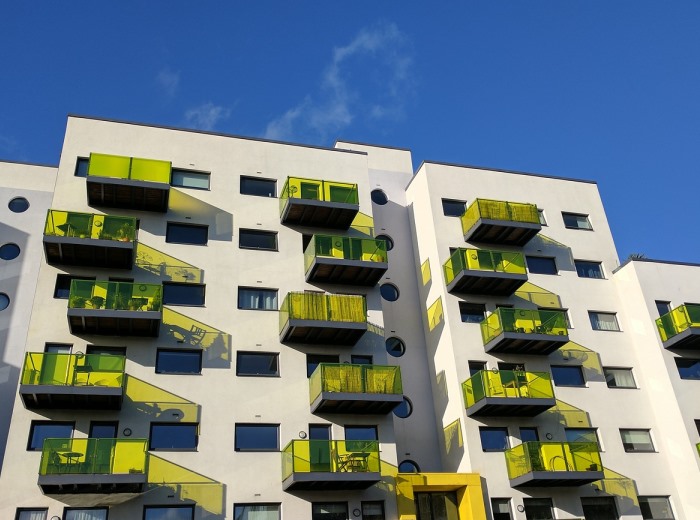
Flagship Government schemes to help more people get on the UK housing ladder have little impact on improving social mobility as better-off buyers are most likely to benefit from the support.
A new LSE report for the Social Mobility Commission into the impact of low-cost homeownership schemes has found that those benefitting from schemes - such as Help to Buy – earn more than one and half times the national working age median income.
Around three in five first time buyers said they would have bought anyway and that the scheme merely enabled them to buy a better property, or one in a better area, than they were originally looking for.
In the UK, promoting ownership for first time buyers is a current Government priority. Since the 1990s, around 1.8 million properties have moved into ownership through right to buy, 200,000 were provided through the affordable homes home ownership route, and 300,000 households were assisted through reduced costs of attaining ownership.
The report builds on prevous Government-commissioned research which found that Help to Buy Equity Loans had generated 43 per cent additional new homes over and above what would have been built in the absence of the policy - contributing 14 per cent to new build output.
However that research found that the average income for these Help to Buy buyers was £41,323 - similar to other first time buyers who had average incomes of £39,834. Fewer than half of all working age households have incomes over £30,000, meaning that this scheme is unlikely to be able to help those households without more specific targeting.
This latest research points out that the high cost of housing means many low-cost homeownership schemes are beyond the reach of almost all families on average earnings. Only 19 per cent of Help to Buy Equity Loan completions to date were for homes worth less than £150,000. If households put down a five per cent deposit, the researchers found that this exceeds the 40 per cent limit of affordability for a median-income working age household.
It recommends new action to help more low-income buyers including targeting financial subsidies on households with incomes up to 1.5 times median income and setting different levels for different regions.
It calls on the Government to provide more advice and guidance to households without a history of ownership to help them into ownership by managing risks and expectations. It also calls for restricting access to subsidies where a first time buyer has unfettered access to alternative sources of financial and other support to become an owner, such as capital from parents or other relatives
Earlier this year, the Social Mobility Commission published research which found that the proportion of first time buyers relying on inherited wealth or loans from the bank of ‘mum and dad’ has reached an historic high and the trend looks set to continue. Increasingly, young people are relying on their parents to help them get a foot on the housing ladder. Over a third of first time buyers in England (34 per cent) now turn to family for a financial gift or loan to help them buy their home compared to one in five (20 per cent) seven years ago. A further one in ten rely on inherited wealth.
For 25-29 year olds, home ownership has fallen by more than half in the last 25 years from 63 per cent in 1990 to 31 per cent most recently. Many of those who do manage to buy eventually can only do so at an older age.
The Rt Hon Alan Milburn, chair of the Social Mobility Commission, said: “This research provides new evidence that the UK housing market is exacerbating inequality and impeding social mobility.
“While it is welcome that the Government is acting to help young people get on the housing ladder, current schemes are doing far too little to help those on low incomes to become home owners.
“The intent is good but the execution is poor. Changes to the existing schemes are needed if they are to do more to help more lower income young people and families become owner-occupiers. Without radical action, particularly on housing supply, the aspiration that millions of ordinary people have to own their own home will be thwarted. ”
In its State of the Nation 2016 report, the Commission recommended that the Government should:
- Commit to a target of three million homes being built over the next decade with one-third – or a million homes – being commissioned by the public sector.
- Expand the sale of public sector land for new homes and allow targeted house-building on Green Belt land.
- Modify its Starter Home initiative to focus on households with average incomes and ensure these homes when sold are available at the same discount to other low-income households.
- Introduce tax incentives to encourage longer private sector tenancies.
- Complement the Heseltine Panel’s plans to redevelop the worst estates with a matching £140 million fund to improve the opportunities social tenants have to get work.
The report’s lead author Dr Bert Provan, from LSE's Centre for Analysis of Social Exclusion and the Department of Social Policy, said: “Most research on low-lost home ownership schemes has focused on the age profile of first time buyers and impact on supply. This research looks at whether they open up home ownership to different and more diverse groups of low income households in the UK. It finds that while there are some positive effects of such schemes – such as increasing supply – the impact on improving social mobility is small.”
The report is available here: www.gov.uk/government/organisations/social-mobility-commission